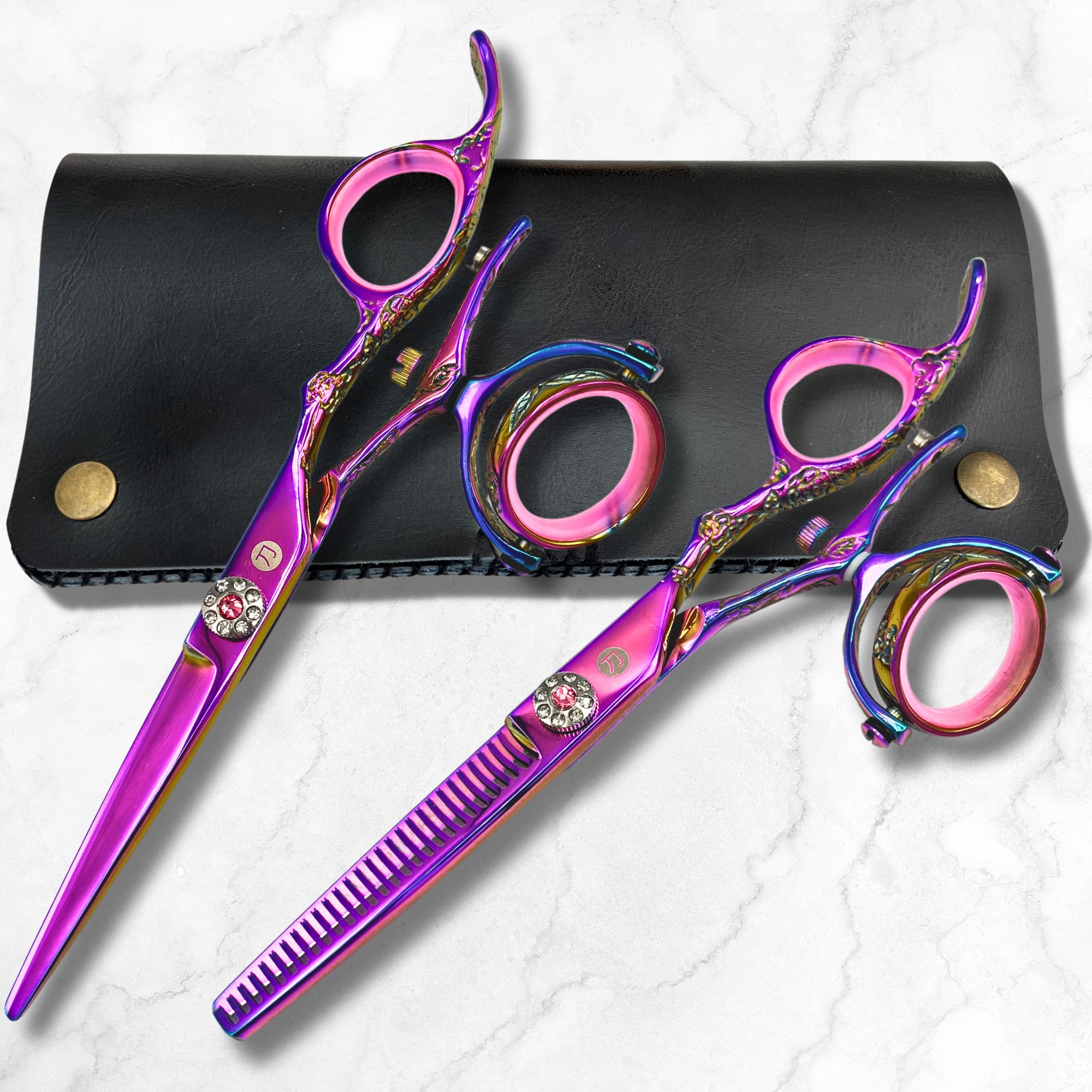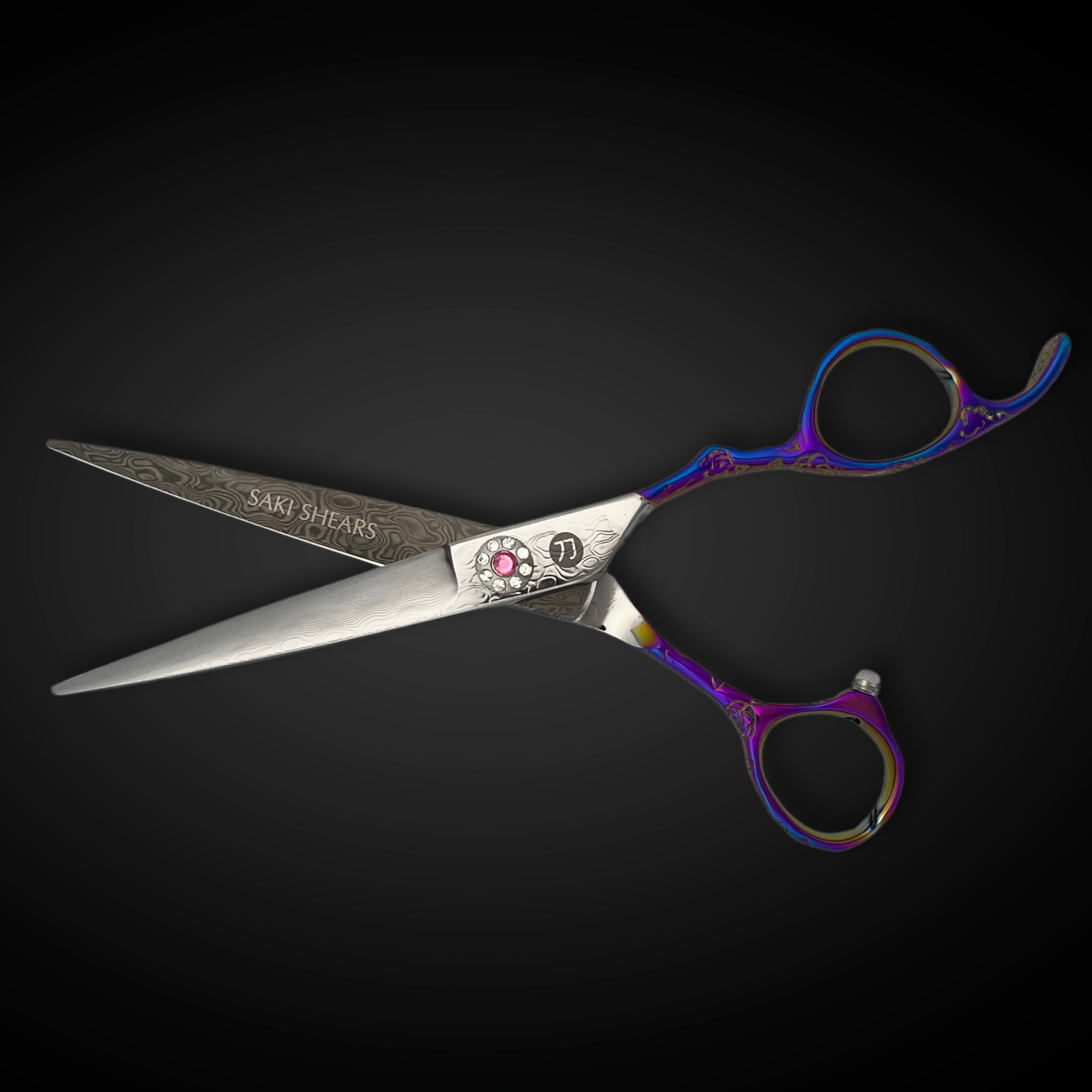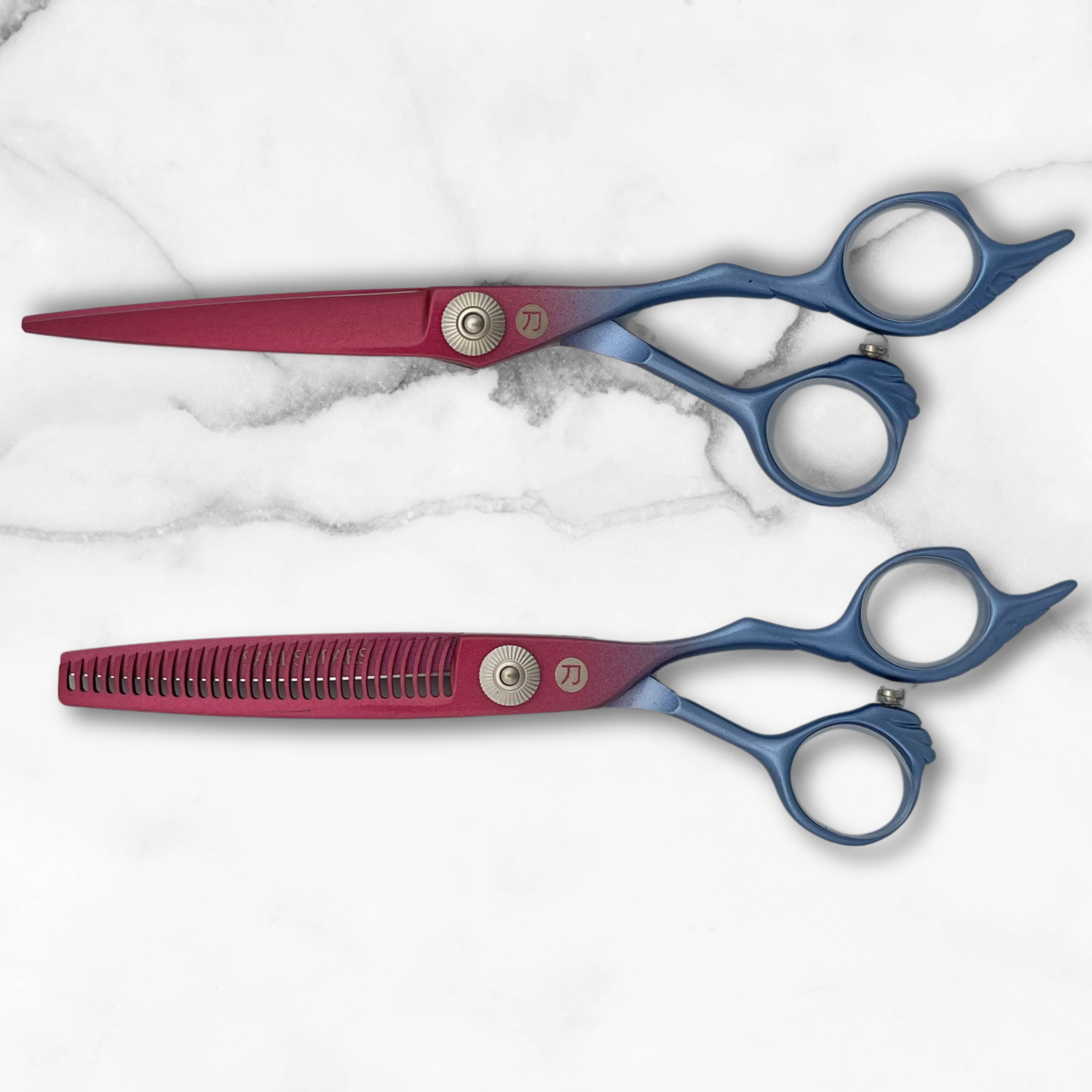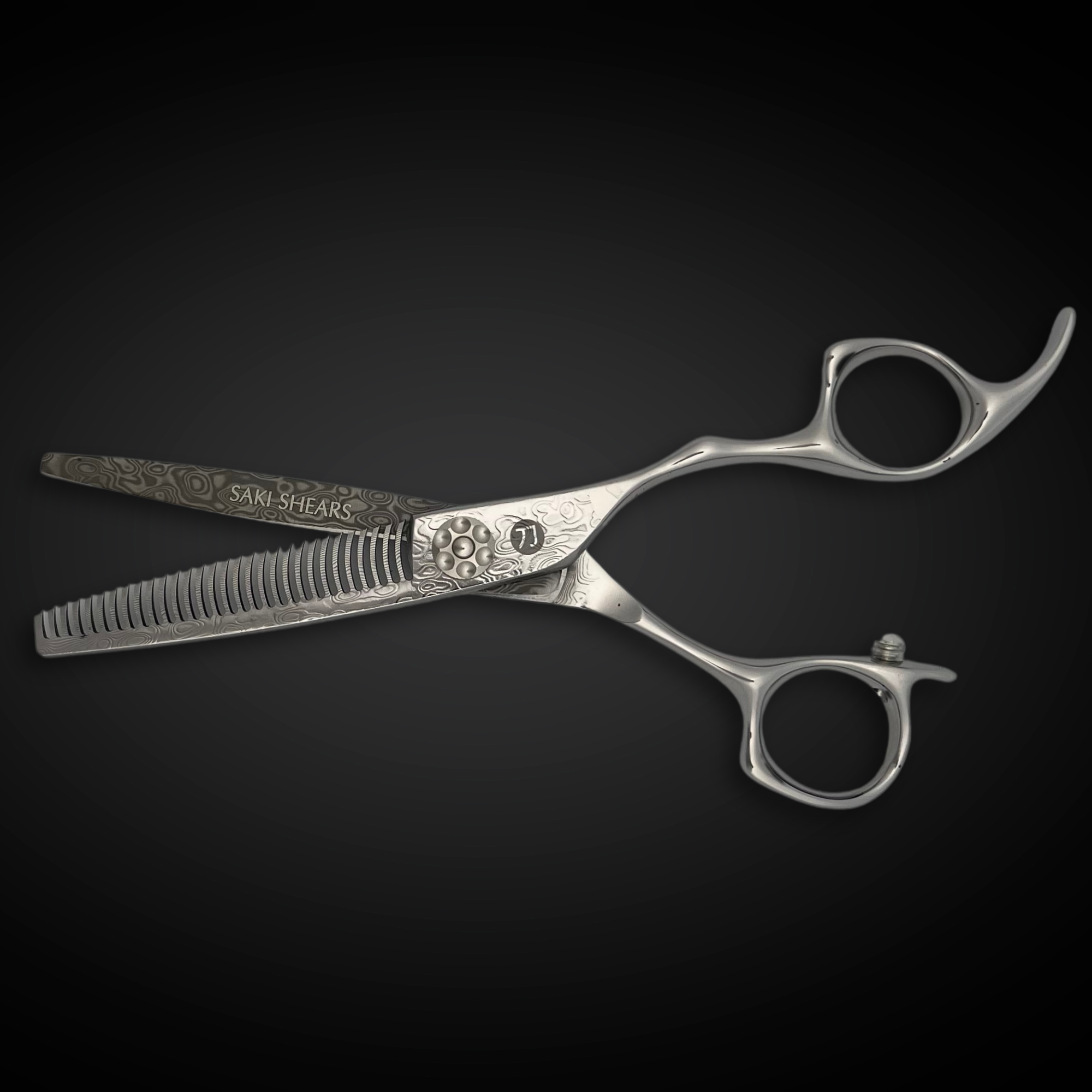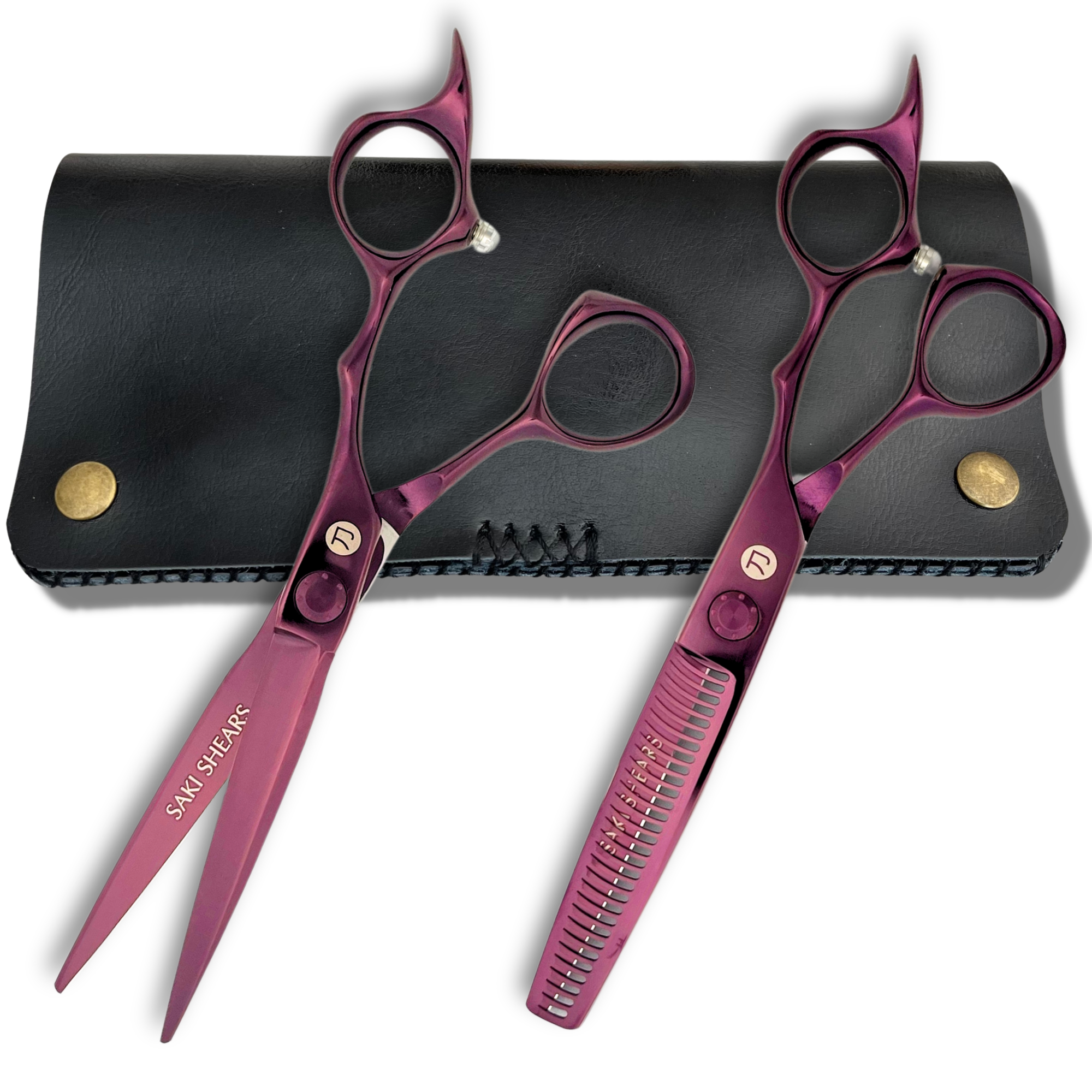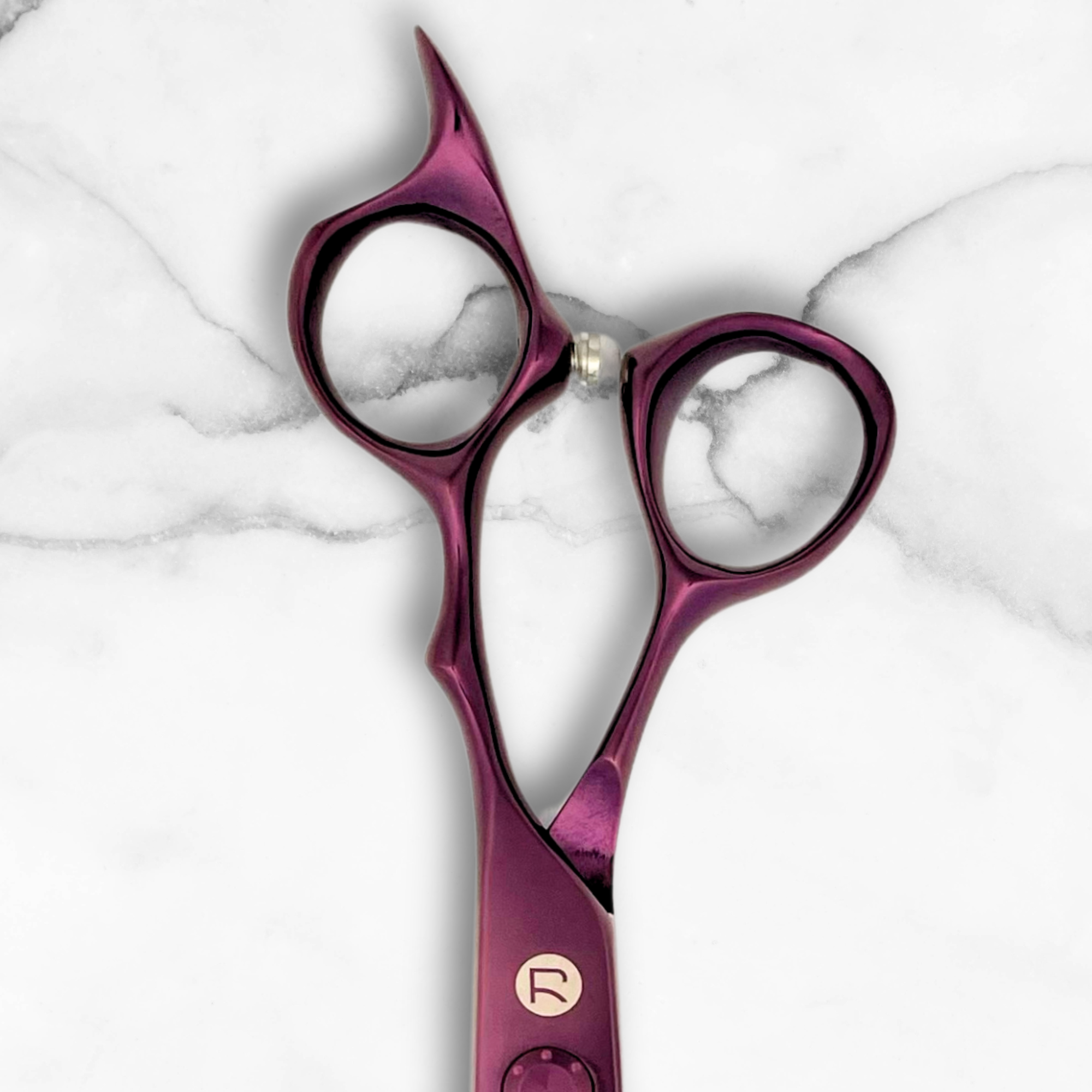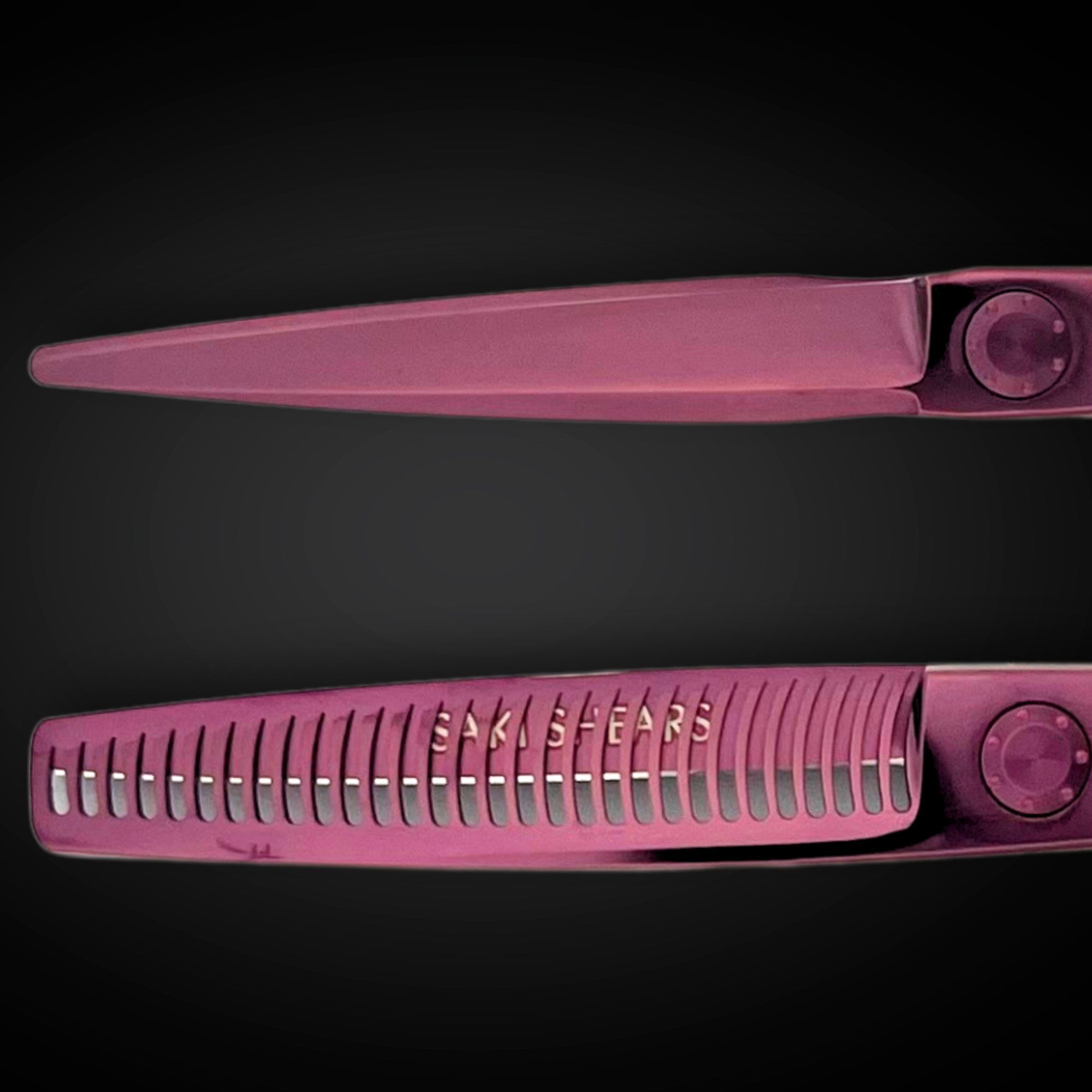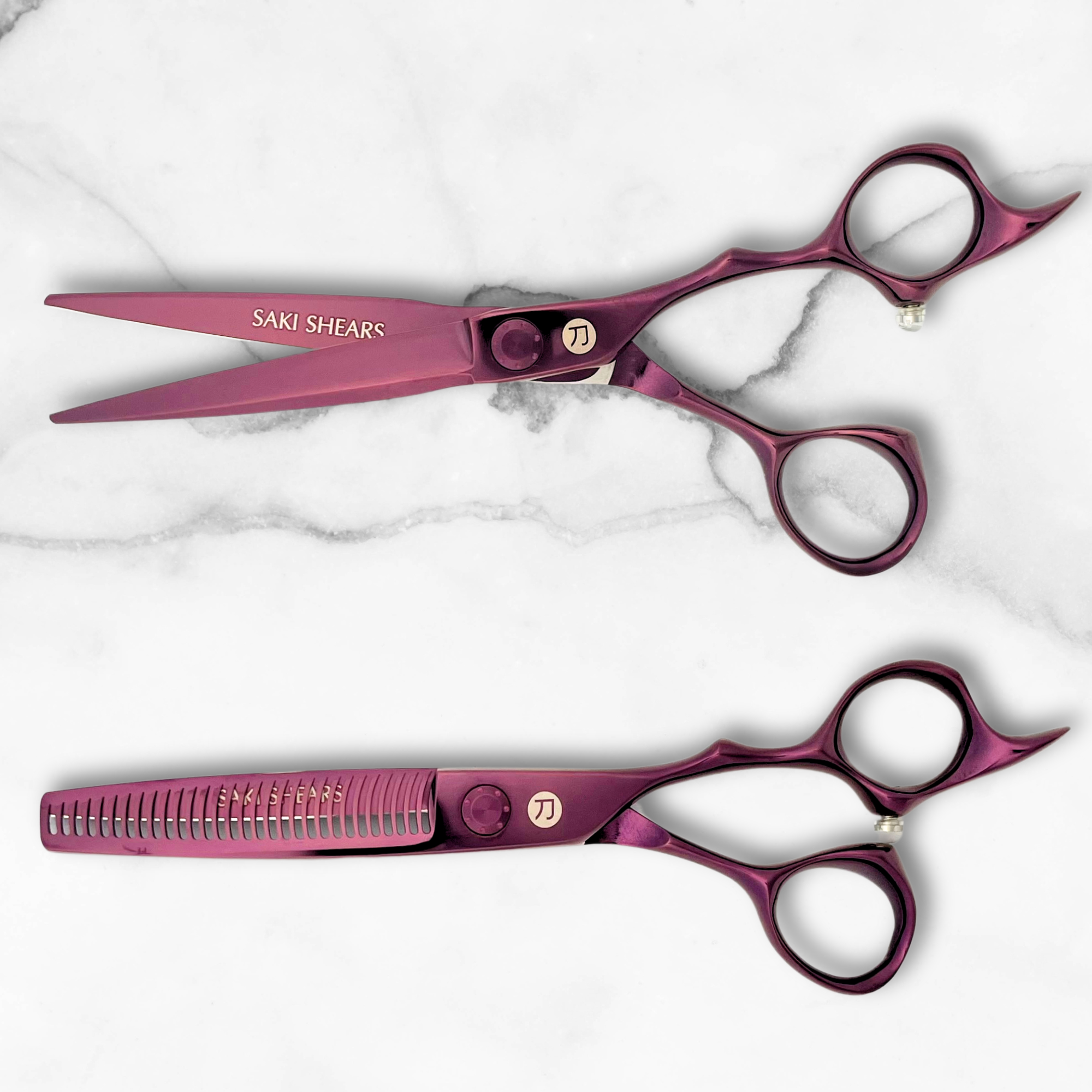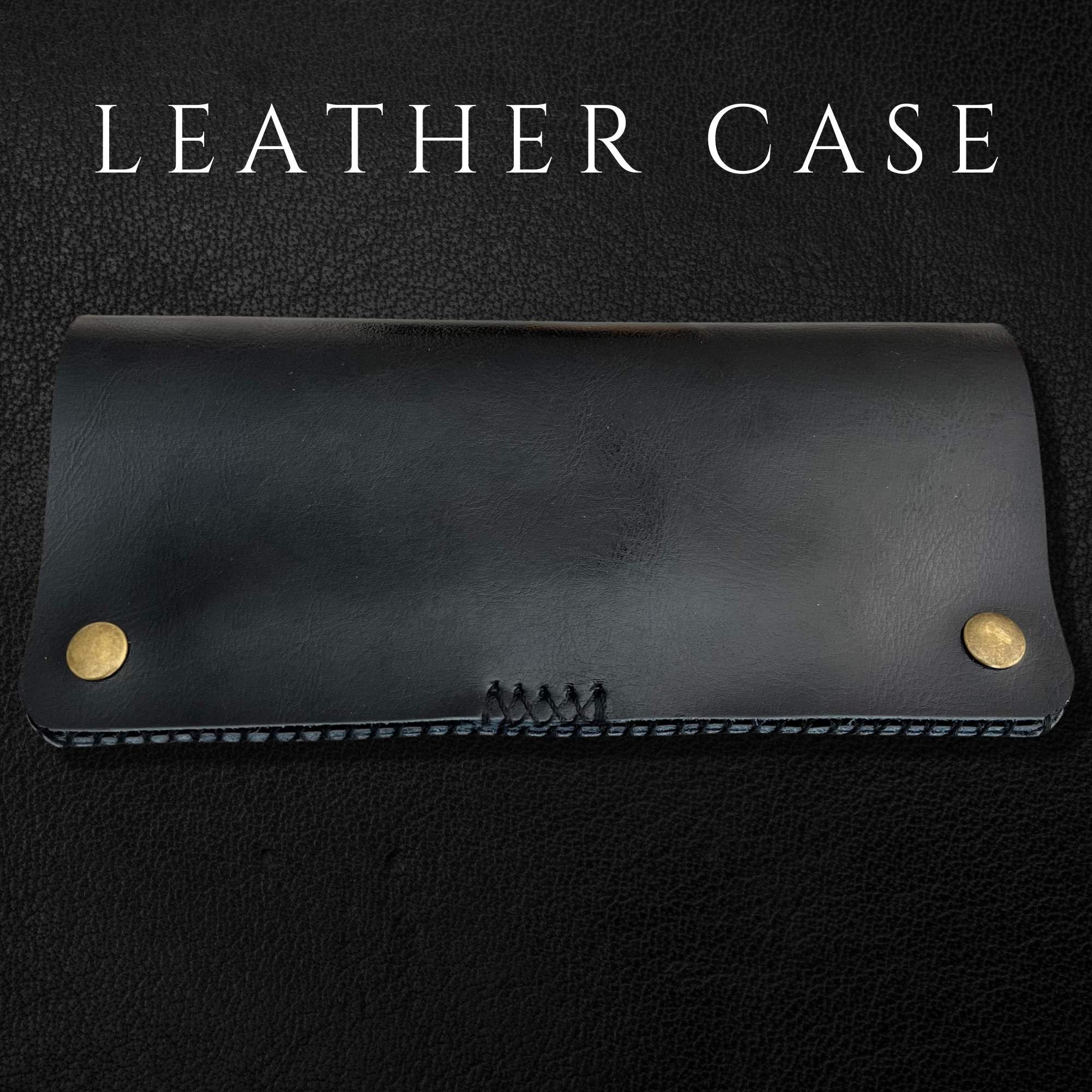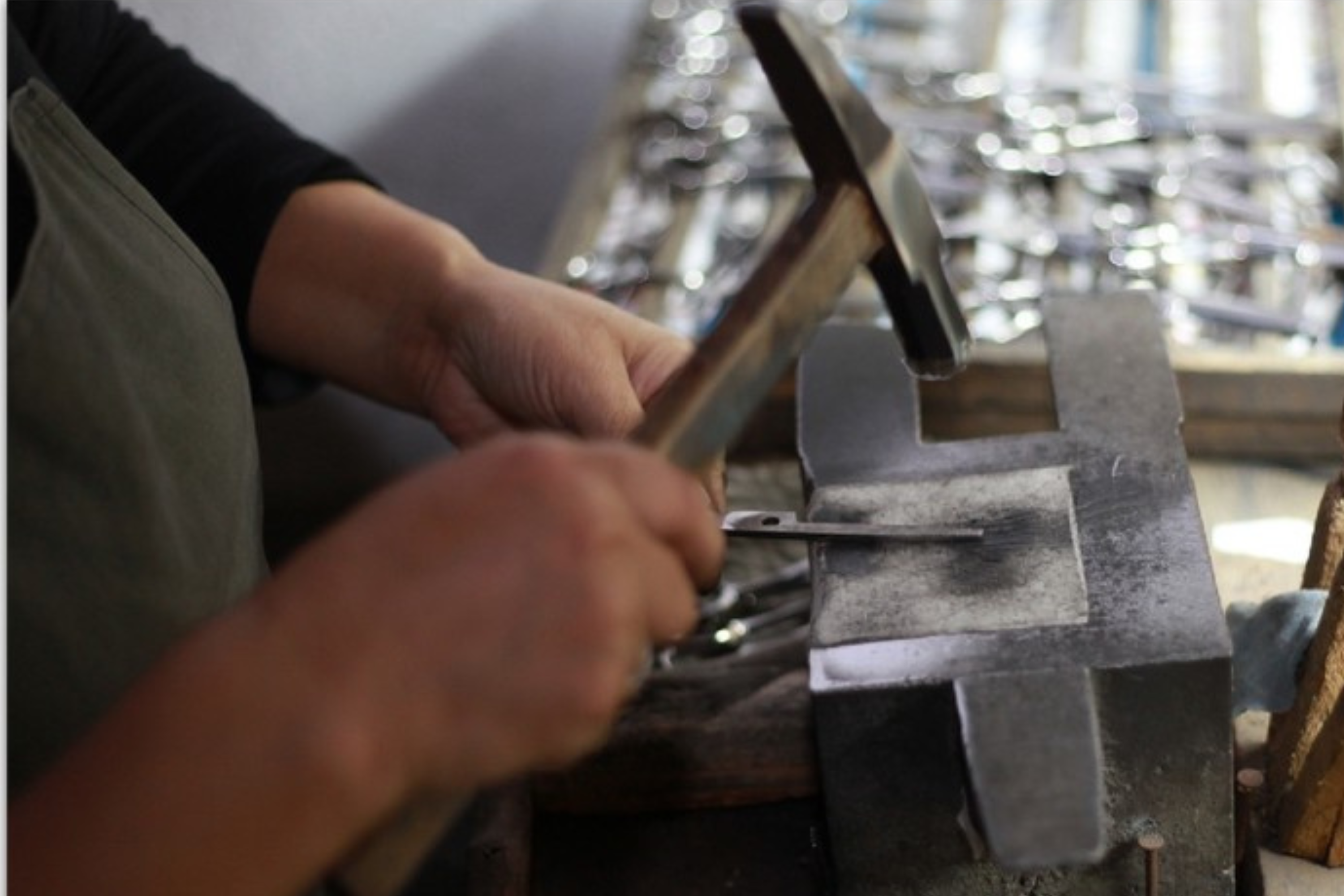The Ultimate Guide to Hair Cutting Shears: Your Questions Answered
In the hairstyling profession, your tools are as vital as your skills. With a multitude of options available, selecting the right shears can be overwhelming. This comprehensive guide aims to answer your most pressing questions, from the benefits of Japanese-made shears to the importance of ergonomic design and specialized types of shears.
Question: What makes shears crafted in Japan a top choice among hairstyling professionals?
Answer: Shears made in Japan are celebrated for their unparalleled craftsmanship, precision, and long-lasting quality. Crafted from premium Japanese stainless steel, these shears offer an exceptional level of sharpness that is difficult to match, making them a go-to choice for professionals who require the best tools.
Question: How crucial is the ergonomic design when selecting the ideal pair of shears?
Answer: Ergonomics play a vital role, especially for those who use shears for extended periods. Poorly designed shears can lead to hand fatigue and even long-term conditions like carpal tunnel syndrome. Features like swivel thumbs, offset handles, and lightweight construction can significantly enhance comfort and reduce strain.
Question: How do texturizing shears differ from standard haircutting scissors?
Answer: Unlike regular haircutting scissors, which have two smooth blades, texturizing shears feature one or more notched blades. These specialized shears are designed to remove less hair with each cut, allowing for more nuanced texturing and layering in hairstyles.
Question: Where's the best place to purchase top-notch hair scissors?
Answer: While local stores may offer some options, the most extensive selection of high-quality shears can be found online. Websites like Saki Shears provide a wide range of premium options, making it easier to find the perfect pair for your specific needs.
Question: How does the weight of a pair of shears impact your hairstyling experience?
Answer: The weight of your shears can significantly influence your comfort and control. Lighter shears are generally easier to manage and can reduce fatigue during long working hours. However, some professionals prefer a bit of weight for better control and precision.
Question: What distinguishes convex blades from beveled blades in hairstyling shears?
Answer: Convex blades are ultra-sharp and are excellent for advanced cutting techniques like slide cutting. Beveled blades have a more angled edge and are more durable, making them ideal for straightforward cuts. Your choice should depend on the techniques you frequently employ.
Question: Are there shears tailored for particular hair types or cutting methods?
Answer: Absolutely, there are specialty shears designed to cater to various hair types and cutting techniques. For instance, chunking shears with wide teeth are perfect for thinning out thick hair, while fine-toothed texturizing shears are ideal for adding subtle texture to finer hair types.
Question: How many years can a high-quality pair of shears last with the right care?
Answer: With diligent maintenance, a top-tier pair of shears can serve you well for several years or even longer. Regular professional sharpening, daily cleaning, and periodic tension adjustments are key to extending the lifespan of your shears. Investing in a reputable brand like Saki Shears can ensure durability and long-term performance.
Question: What advantages do swivel thumb shears offer?
Answer: Swivel thumb shears come with a rotating thumb ring, providing greater flexibility and reducing strain on your thumb and wrist. This design allows you to cut from various angles without having to adjust your hand position, making them particularly useful for professionals who work for extended periods.
Question: What should you look for to gauge the quality of a pair of shears?
Answer: Several factors can help you assess shear quality, including the material used, the craftsmanship, and the reputation of the brand. High-grade stainless steel, particularly Japanese or German, is often recommended for its durability and sharpness. Customer reviews and professional recommendations can also offer valuable insights.
Question: Are there specialized shears for left-handed hairstylists?
Answer: Yes, specialized left-handed shears are available and are a must-have for left-handed professionals. These shears offer ergonomic benefits tailored to left-handed users, such as reversed blades and handle configurations, which can significantly improve comfort and precision.
Question: Why is having a shear case important for hairstyling professionals?
Answer: A shear case is essential for safeguarding your investment. High-quality shears are an investment, and a good case protects them from potential damage, moisture, and accidental nicks. It also helps in keeping your tools organized and easily accessible.
Question: Apart from sharpening, what other maintenance activities are crucial for shears?
Answer: In addition to frequent sharpening, daily cleaning to remove hair and product buildup is essential. Periodic adjustments to the tension can also ensure that the blades are aligned correctly for optimal performance. Storing your shears in a protective case can further extend their lifespan.
Question: Is it better to buy barber scissors online or from a local store?
Answer: While local stores may offer the advantage of physical inspection, online stores like Saki Shears provide a broader range of high-quality options. Online shopping also allows you to read customer reviews and compare prices more easily, making it a convenient option for many professionals.
Question: How often should hairstyling shears be sharpened?
Answer: The frequency of sharpening depends on how often you use your shears, but a good rule of thumb is to have them professionally sharpened every 500-700 haircuts. Proper sharpening ensures that the blades maintain their original angle and sharpness, leading to consistent, high-quality cuts.
Choosing the right shears is a critical decision that can significantly impact your work quality and comfort. This comprehensive guide aims to answer your most pressing questions, helping you make an informed choice for your professional toolkit. Whether you're looking for specialized shears or general advice on maintenance, we hope this guide has been a valuable resource.

